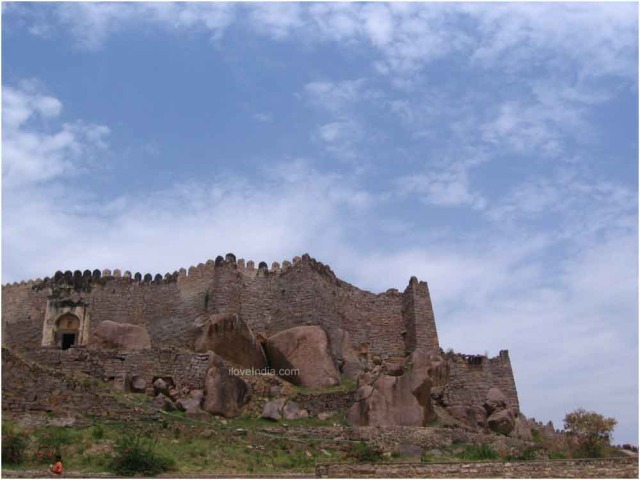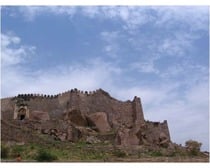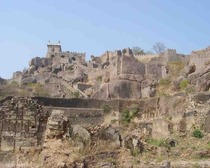Golconda Fort, one of the most popular historical monuments of India, is situated near Hyderabad city. Read on to explore some fun and interesting facts about Golconda Fort.
Golconda Fort
Golconda Fort, encompassing a ruined city within itself, is situated in Andhra Pradesh, to the west of the capital city of Hyderabad. Initially the capital and citadel of the Qutb Shahi Kingdom, the fort counts amongst the most popular historical monuments of India, today. Apart from being home to one of the most powerful Muslim sultanates in the region, Golconda Fort also served as the center of a flourishing diamond trade. If you want to know more about Golconda Fort, make use of the fun and interesting facts provided in the lines below. 

Interesting And Fun Facts About Golconda Fort
- Golconda Fort dates back to 1143, when it was built by a ruler of Hindu Kakatiya dynasty, which ruled the area at that time.
- As per a legend, the fort was built by the ruler of Kakatiya dynasty after a shepherd boy came across the idol of a God on the site.
- The name 'Golconda' is believed to have been derived from a Telugu word 'Golla Konda', which means 'Shepherd's Hill'.
- The granite hill on which the fort has been built is 120 meters (400 ft) high and stands surrounded by massive crenelated ramparts.
- Initially a mud fort, Golconda Fort rose to prominence only around 1507, as the seat of Qutb Shahi dynasty, after the collapse of Bahmani Sultanat.
- Under Qutb Shahi dynasty, the mud fort was expanded. The expansion took over a period of 62 years, under the first three Qutb Shahi kings. It was turned into a granite fort, extending around 5 km in circumference.
- Golconda Fort remained the capital of the Qutb Shahi dynasty until 1590, when the capital was shifted to Hyderabad.
- The fort fell into ruins after a siege, and its resultant fall, to Mughal Emperor Aurangzeb.
- Darya-e Nur, Nur-Ul-Ain Diamond, Kohinoor, Hope Diamond and Regent Diamond are believed to have been excavated in the mines of Golconda.
- Golconda Fort comprises of four distinct forts, with a 10 km long outer wall that has 87 semi circular bastions, eight gateways and four drawbridges.
- Some of the semi circular bastions of the fort are still mounted with cannons,
- There are a number of royal apartments and halls, temples, mosques, magazines and stables inside Golconda Fort.
- There is a Fateh Darwaza" (Victory gate) inside the fort, studded with giant iron spikes. It was so called after Aurangzeb’s victory.
- Bala Hissar Gate, located on the eastern side, serves as the main entrance to Golconda Fort.
- The fort also has a mosque - Toli Masjid, situated at Karvan, around 2 km away. It was built by Mir Musa Khan Mahaldar, in 1671.
- At a distance of approximately 1 km from Golconda Fort's outer wall are the tombs of the Qutb Shahi sultans.
- The mining town of Golconda, in Arizona and now a ghost town, was named after Golconda Fort, since it had mines like the ones found near the latter.
- The architecture of the fort comes across as confluence of Hindu and Muslim architectural styles.
- It is believed that there is a secret underground tunnel in Golconda Fort, which leads from the 'Durbar Hall' to one of the palaces at the foot of the hill.
- One of the main highlights of the fort is a sound and light show, which depicts its glorious past.


See also
More from iloveindia.com
- Home Remedies | Ayurveda | Vastu | Yoga | Feng Shui | Tattoos | Fitness | Garden | Nutrition | Parenting | Bikes | Cars | Baby Care | Indian Weddings | Festivals | Party ideas | Horoscope 2015 | Pets | Finance | Figures of Speech | Hotels in India : Delhi | Hyderabad | Chennai | Mumbai | Kolkata | Bangalore | Ahmedabad | Jaipur
- Contact Us Careers Disclaimer Privacy Policy Advertise With Us Lifestyle Sitemap Copyright iloveindia.com. All Rights Reserved.







